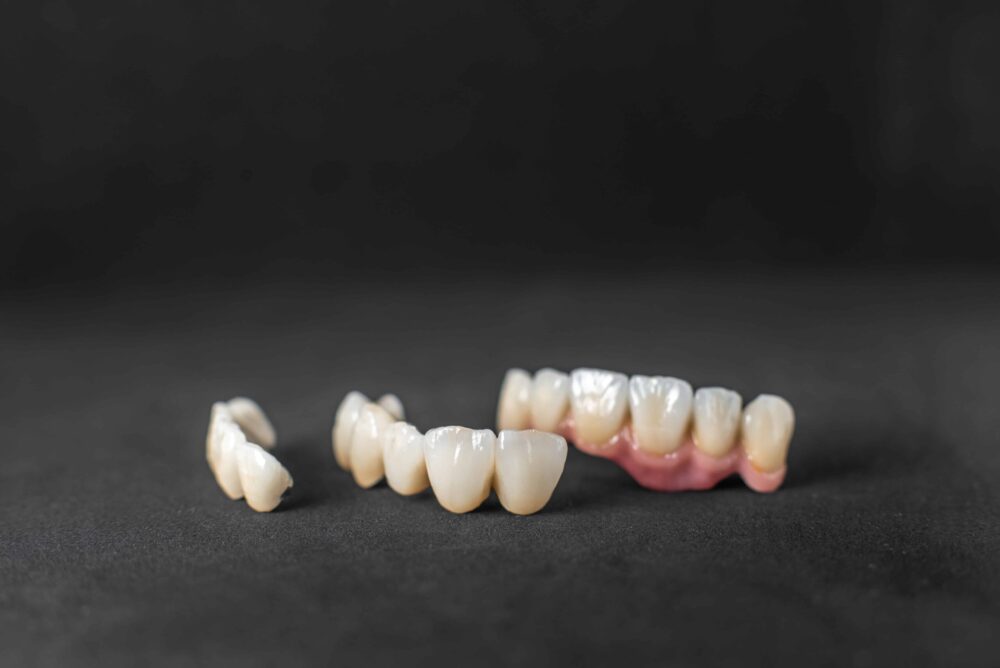A dental bridge is a restorative dental solution used to replace one or more missing teeth. It consists of artificial teeth (pontics) held in place by dental crowns on the adjacent natural teeth or dental implants. A well-fitted dental bridge restores oral function, enhances aesthetics, and prevents complications caused by missing teeth, such as misalignment, difficulty chewing, and bone loss.
🔎 Related Reading: Restorative Dentistry Options
Why Are Dental Bridges Necessary?
Missing teeth can lead to several oral health complications, including:
✅ Difficulty chewing and speaking
✅ Increased stress on remaining teeth
✅ Shifting of surrounding teeth, causing misalignment
✅ Bone loss in the jaw due to lack of stimulation
✅ Changes in facial appearance due to missing tooth structure
A dental bridge provides a stable, long-term solution that helps maintain proper bite alignment and oral health.
📌 Considering a dental bridge? Learn more about dental crowns and bridges.
Types of Dental Bridges
There are four main types of dental bridges, each suited for different patient needs:
1. Traditional Dental Bridge
🔹 Most common type
🔹 Uses dental crowns on adjacent natural teeth to support the bridge
🔹 Best for patients with healthy teeth on either side of the gap
2. Cantilever Bridge
🔹 Similar to a traditional bridge, but supported by a crown on only one adjacent tooth
🔹 Used when only one natural tooth is available next to the missing tooth
3. Maryland Bridge (Resin-Bonded Bridge)
🔹 Uses a metal or porcelain framework bonded to the back of adjacent teeth
🔹 Requires minimal alteration to natural teeth
🔹 Ideal for replacing front teeth
4. Implant-Supported Bridge
🔹 Supported by dental implants instead of crowns
🔹 Most durable and long-lasting option
🔹 Recommended for patients missing multiple teeth
🔎 Related Reading: Dental Implants vs. Bridges: What’s Best for You?
The Dental Bridge Procedure
The process of getting a dental bridge typically requires multiple visits and includes these key steps:
Step 1: Preparation
- Adjacent teeth are reshaped to accommodate crowns (if using a traditional bridge).
Step 2: Impressions
- Impressions or digital scans are taken to create a custom-fitted bridge.
Step 3: Temporary Bridge
- A temporary bridge may be placed while the permanent restoration is fabricated.
Step 4: Placement
- The final bridge is fitted, adjusted, and permanently bonded for stability and comfort.
Caring for Your Dental Bridge
Proper maintenance extends the lifespan of your dental bridge:
🦷 Brush and floss daily, especially around and under the bridge
🦷 Use a floss threader or interdental brush to clean beneath the bridge
🦷 Schedule regular dental check-ups for professional cleanings and inspections
🦷 Avoid chewing on hard foods that could damage the bridge
With proper care, a dental bridge can last 10-15 years or longer!
📌 Learn More: Preventive Dentistry for Long-Lasting Dental Work
Schedule a Consultation at Pecan Tree Family Dentistry
If you have missing teeth and are considering a dental bridge, our expert team at Pecan Tree Family Dentistry can help determine the best restorative option for your smile.
📞 Contact Us Today: Schedule a Consultation



